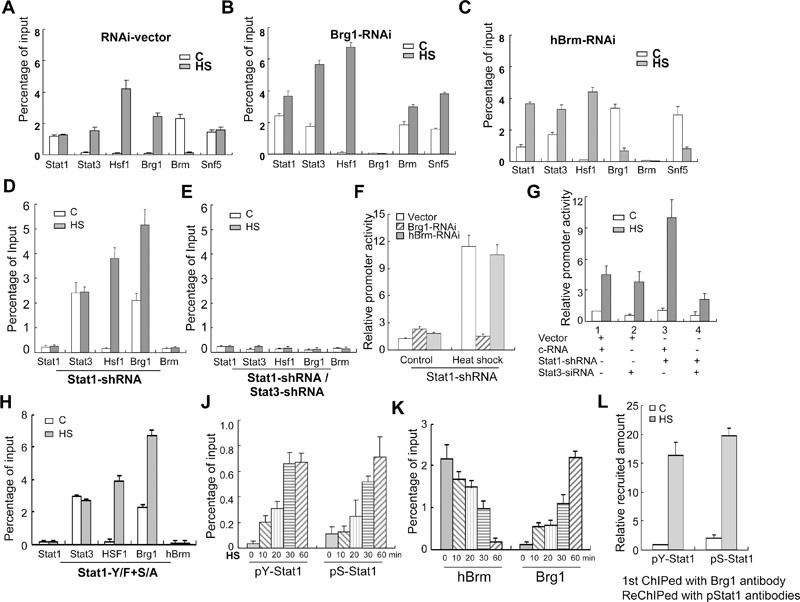Figure 4 | Cell Research

Effects of Stat1 on promoting hBrm and Brg1 recruitment to the hsp90α GAS in a heat-shock response. (A-D) ChIP analysis of Jurkat cells transfected with vector and the respective siRNA for Brg1, hBrm and Stat1 to study their effects on recruiting endogenous factors to the GAS before and after heat shock. (E) ChIP analysis of Jurkat cells co-transfected with Stat1-siRNA and Stat3-siRNA. (F) Relative promoter activity of hsp90α in Jurkat cells with knockdown of Stat1, Brg1 or hBrm. Annotations as described for Figure 1C. (G) Relative hsp90α promoter activities with Stat1 and Stat3 knocked down individually or simultaneously in Jurkat cells. Vector: shRNA plasmid control for Stat1-shRNA; c-RNA: control RNA for Stat3-siRNA. Annotations as described for Figure 3E. (H) ChIP assay of Jurkat cells transfected with Stat1-Y/F+S/A double-mutant construct. Annotations as described for Figure 1A. (J,K) ChIP assays of pY-Stat1, pS-Stat1, hBrm and Brg1 at the hsp90α GAS. 0-60: incubation time in minutes at 42 °C. Each bar represents an average of at least three independent experiments and shows the mean ± S.D. (L) ChIP-ReChIP assay in Jurkat cells transfected with FLAG-tagged Brg1. Anti-FLAG antibody was used for the first ChIP to recover Brg1-associated chromatin fragments at 37 °C and 42 °C. These fragments were then ReChIPed at each of the previous temperatures with anti-pY-Stat1 and anti-pS-Stat1. The relative recruitment of pY-stat1 and pS-stat1 at 37 °C and at 42 °C is shown as the mean ± S.D.